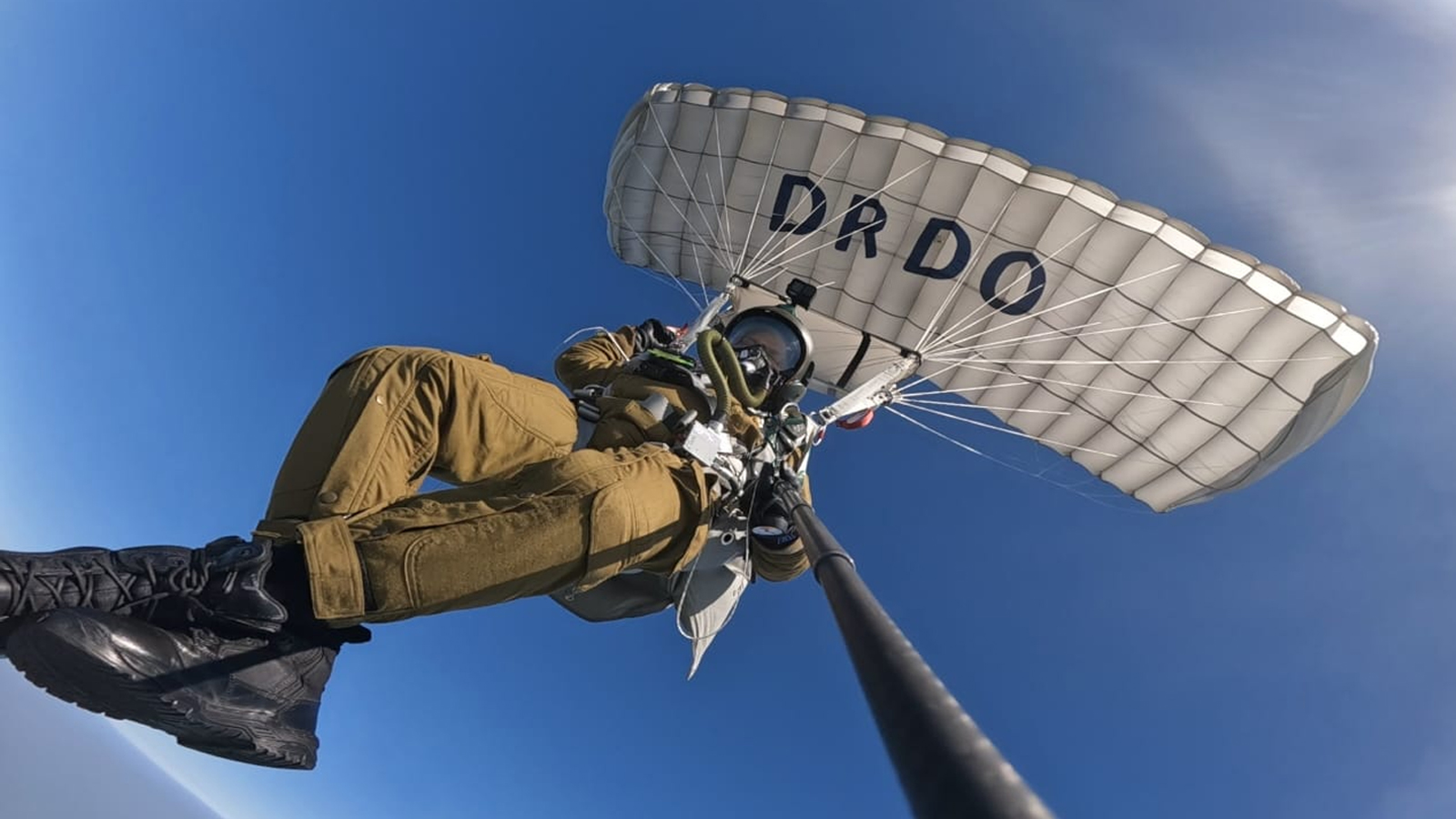India on Wednesday successfully conducted a high-altitude combat freefall jump from 32,000 feet using the Military Combat Parachute System (MCPS), developed indigenously by the Defence Research and Development Organisation (DRDO).
The test jump, carried out by personnel from the Indian Air Force, marks a significant technological achievement, making the MCPS the only parachute system currently in operational use by the Indian Armed Forces capable of deployment above 25,000 feet.
The MCPS has been designed by DRDO’s Aerial Delivery Research and Development Establishment, Agra, and Defence Bioengineering and Electromedical Laboratory, Bengaluru.
It features a lower rate of descent and superior steering capabilities, enabling paratroopers to exit aircraft safely, deploy parachutes at predetermined altitudes, navigate accurately, and land precisely in designated zones.
The system is compatible with Navigation with Indian Constellation (NavIC), ensuring operational autonomy and immunity from interference or denial of service by foreign actors – a critical advantage during conflicts.
The successful test paves the way for the induction of indigenous parachute systems into the armed forces. Officials said that the MCPS offers lower turnaround time for maintenance and repair compared to imported systems, enhancing operational availability and reducing dependence on foreign suppliers during critical missions.
Defence Minister Rajnath Singh congratulated DRDO, the Armed Forces, and industry partners for the achievement, calling it “a significant milestone for India’s indigenous defence capability.”
Samir V. Kamat, Secretary, Department of Defence R&D and Chairman DRDO, also lauded the team behind the successful demonstration, describing it as “a major step towards self-reliance in the field of aerial delivery systems.”














